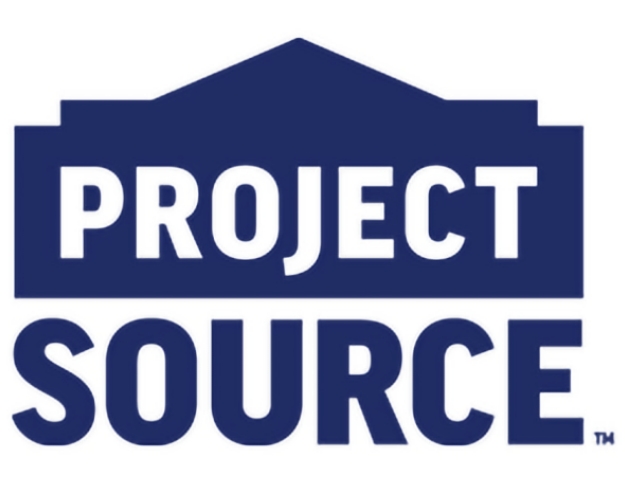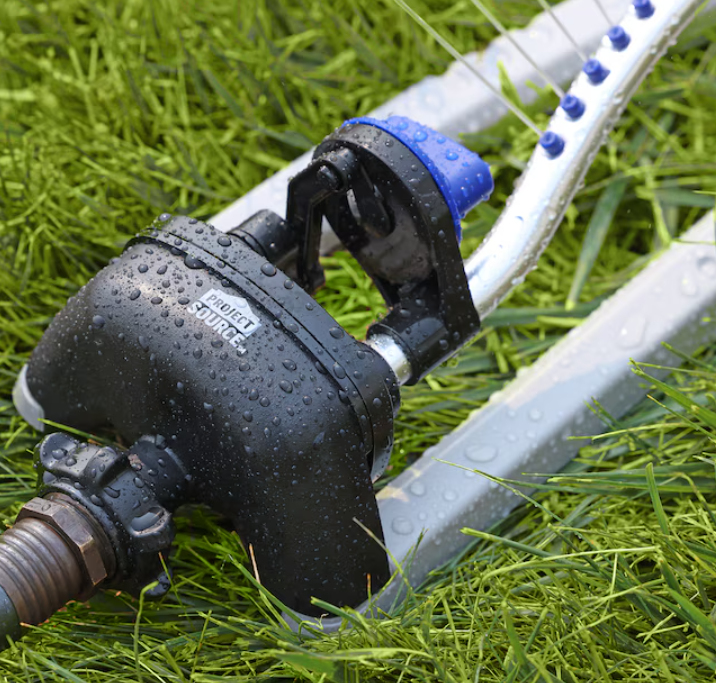
Project Source 3000-sq ft Oscillating Sled Lawn Sprinkler
- Waters up to a 3,000 sq ft area
- 15 Precision nozzles ensure even watering coverage
- Adjustable spray range lets you water just where you need it
- Backed by a Melnor® 3 year limited warranty
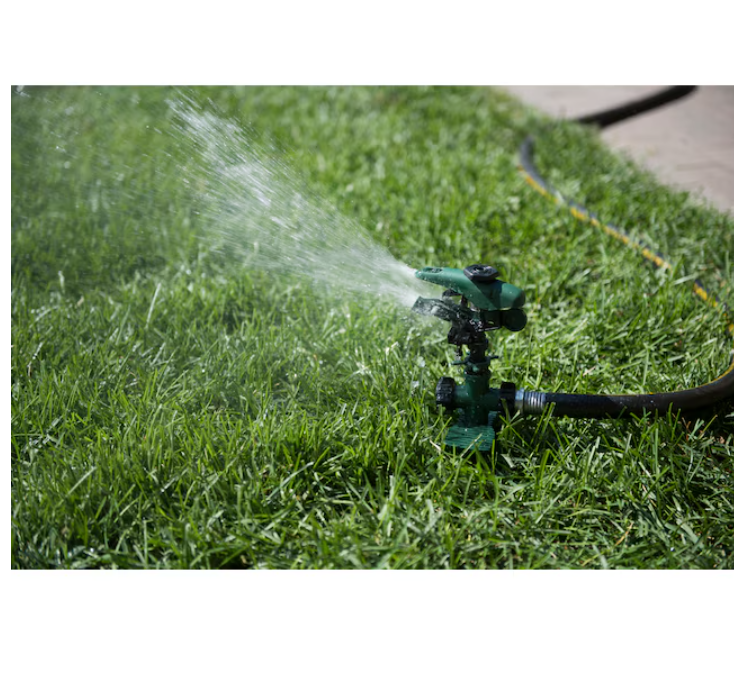
Project Source 4000-sq ft Impulse Spike Lawn Sprinkler
- 4000 sq ft coverage area can cover partial circle, or full 360 degrees
- Trio of spikes ensure deep rooted foundation
- Rust-proof durable polymer impulse head for extended life
- Footholds above spikes for easy ground insert
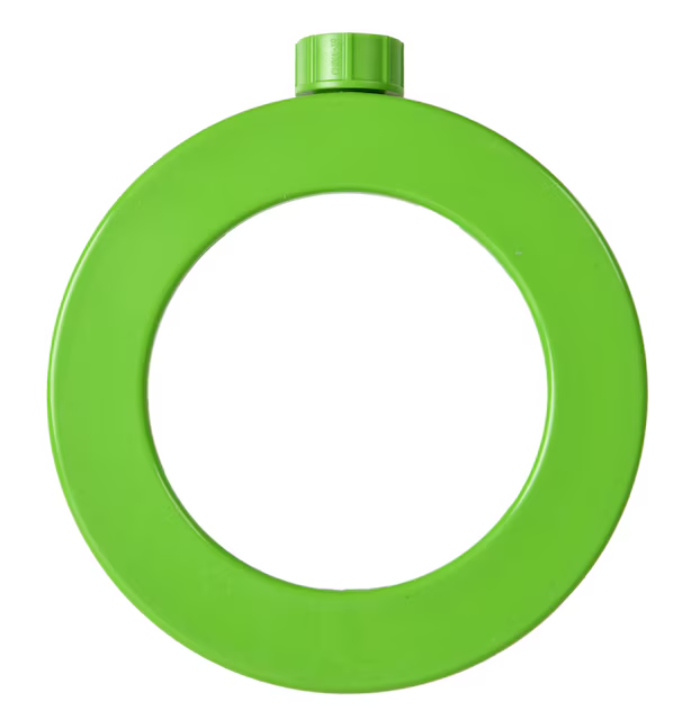
Project Source Ring 900-sq ft Spray Lawn Sprinkler
- Uniform spray creates even coverage throughout entire watering area
- Simple sprinkler for watering or playing
- Perfect for watering flower beds, vegetable gardens and small patches of lawn that your regular sprinklers don’t reach
- Designed with a crush-resistant sturdy frame and polymer construction for extra strength, durability and long-term use
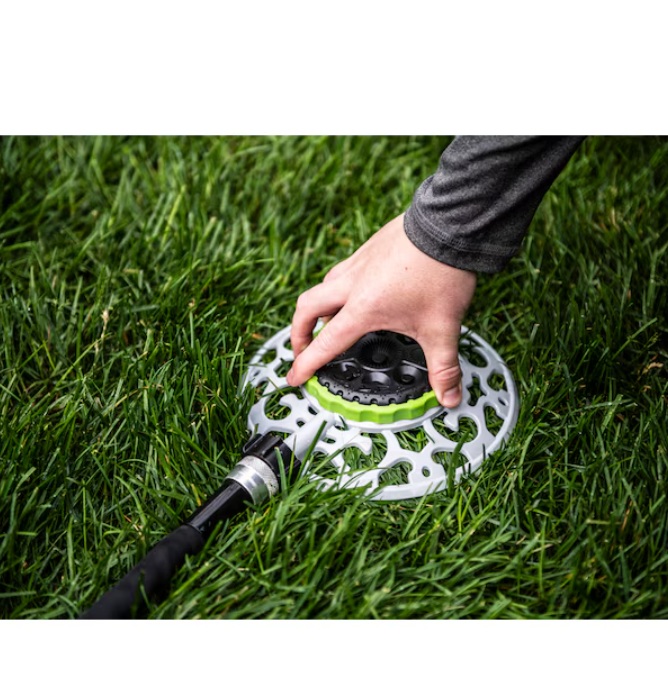
Project Source Turret 900-sq ft Spray Lawn Sprinkler
- 8 Preset watering patterns include mist, angle, 180 mist, spot shower, rain shower, 180 rain, rectangle shower and broad shower
- Durable decorative metal base
- Soft grip on multi pattern head
- Metal swivel attachment
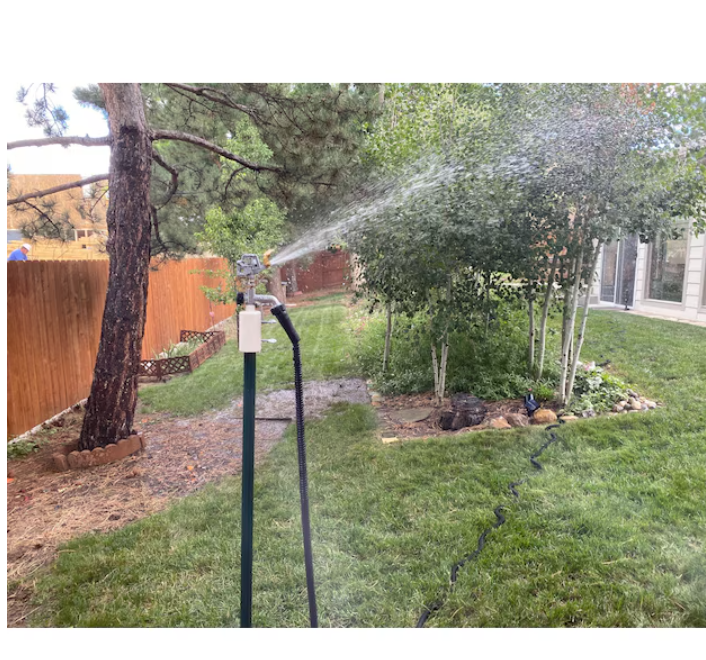
Project Source 6400-sq ft Impulse T-post Lawn Sprinkler
- Water up to 85 ft with adjustable coverage that goes from a partial to a full circle
- Built-in 115 degree, angled hose connection makes it easy to attach the hose without putting pressure on your hands
- Slides over the top of any standard t-post
- Use on a single post or turn your whole fence into a sprinkler system
- Two thumb screws tightly secure the sprinkler to any T-post and can be removed easily for relocation
Transforming Your Yard with Budget-Friendly Irrigation Solutions
When I first moved into my suburban home, my lawn was—let’s be honest—a disaster. Brown patches everywhere, uneven growth, and a water bill that skyrocketed every summer as I desperately tried to keep things green with manual watering. That all changed when a neighbor suggested I look into Project Source sprinklers. Three years later, my lawn is the envy of the block, and I’ve become something of a neighborhood expert on these affordable irrigation solutions.
If you’re wondering whether Project Source sprinklers might be the answer to your lawn care woes, you’ve come to the right place. I’ve put together this comprehensive guide based on my personal experience and extensive research to help you make an informed decision about these popular garden tools.
What Exactly Are Project Source Sprinklers?
Project Source is a home improvement brand that offers a range of lawn and garden products, including their popular line of sprinklers. Project Source sprinklers are designed to provide efficient and effective irrigation solutions for homeowners at budget-friendly prices. These sprinklers aren’t just functional—they’re designed to solve specific lawn care challenges while being accessible to the average homeowner.
The brand has positioned itself as a reliable alternative to higher-priced competitors, offering quality irrigation products without the premium price tag. While they may not have all the bells and whistles of some professional-grade systems, they deliver solid performance for typical residential needs.
The Various Types of Project Source Sprinklers
One of the most appealing aspects of the Project Source line is the variety of sprinkler types available. Different lawn shapes, sizes, and watering needs require different solutions, and Project Source seems to understand this well.
Oscillating Sprinklers
The oscillating models are perhaps the most recognizable in the Project Source lineup. These feature a long, tube-like bar with multiple water jets that sweep back and forth, creating a rectangular watering pattern. I’ve found these particularly effective for medium-sized, regularly shaped lawns.
The movement is hypnotic to watch, and more importantly, it provides even coverage across your grass. The rectangular spray pattern means you can position it to avoid watering sidewalks or driveways—a water-saving feature I greatly appreciate.
Impact Sprinklers
For larger areas, Project Source offers impact sprinklers. These are the ones that make that distinctive “tick-tick-tick” sound as they rotate. The mechanical arm creates pulses of water that can reach impressive distances—up to 80 feet in diameter with some models.
I’ve used these in the back portion of my yard where I need greater distance, and they perform admirably. The sturdy construction stands up to regular use, and the metal components have shown good resistance to rust over time.
Stationary Sprinklers
For smaller areas or focused watering, Project Source offers several stationary sprinkler designs. These don’t move but instead create a fixed spray pattern—perfect for flower beds or small sections of lawn.
I keep one of these by my front garden bed for those hot summer days when my perennials need extra attention. The simplicity means there are fewer moving parts to break down, making these possibly the most durable options in the lineup.
Traveling Sprinklers
One of the more interesting options is the traveling sprinkler. These tractor-style units actually move across your lawn, following the path of your garden hose. It’s like having a little irrigation robot! The water pressure powers the wheels, creating a self-propelled watering system.
My neighbor uses one of these for his long, narrow side yard, and it’s perfect for that application. No need to move the sprinkler multiple times—it does the work for you.
Where to Purchase Project Source Sprinklers
When I first started looking for Project Source sprinklers, I was pleasantly surprised by their availability. Unlike some specialty brands that require ordering from specific dealers, Project Source products are widely accessible.
Major Home Improvement Stores
Lowe’s is the primary retailer for Project Source products, as it’s one of their house brands. You’ll find a good selection of their sprinklers in the garden department, particularly during spring and summer months. I’ve noticed the inventory tends to be most robust in April and May as homeowners gear up for lawn care season.
Other major home improvement chains like Home Depot occasionally carry comparable models, though they may be under different brand names with similar specifications.
Online Retailers
If you prefer online shopping, you’ll find Project Source sprinklers on Lowe’s website, as well as on Amazon and other e-commerce platforms. I’ve purchased replacement parts through Amazon when I needed them quickly, and the experience was seamless.
Online shopping also gives you the advantage of seeing customer reviews, which can be invaluable when deciding between different models. I always recommend reading through these to get a sense of real-world performance.
Seasonal Availability
It’s worth noting that these products tend to be seasonal in physical stores. If you’re looking in the dead of winter, you might have trouble finding the full range of options. I learned this the hard way when trying to replace a broken sprinkler in January! Online shopping remains your best bet during off-seasons.
Price Points: What to Expect
One of the main attractions of Project Source sprinklers is their affordability. The brand offers quality irrigation solutions at prices that won’t break the bank, making proper lawn care accessible to more homeowners.
Entry-Level Options
Basic stationary sprinklers from Project Source typically start around $8-15, making them an easy entry point for new homeowners or those just beginning to invest in lawn care. My first purchase was a simple circular pattern sprinkler that cost just under $10, and it served me well for two full seasons before I upgraded.
Mid-Range Models
The oscillating and impact sprinklers generally fall in the $15-30 range, depending on size and features. I found this to be the sweet spot in terms of performance and durability. My current oscillating sprinkler cost $24.99 and has been working flawlessly for over two years now.
Premium Offerings
The most advanced options, including traveling sprinklers and multi-pattern models, typically range from $30-45. While this might seem steep compared to the basic models, it’s still significantly less than professional-grade brands that can easily cost $75-100 for comparable features.
Value Proposition
What makes Project Source particularly appealing from a cost perspective is the value proposition. While not the cheapest option on the shelf, they offer substantially better durability and performance than the bottom-barrel alternatives that might save you a few dollars upfront but require frequent replacement.
I initially tried the absolute cheapest option available (not Project Source) and found myself replacing it within weeks after plastic components cracked. The slight premium for Project Source has proven to be a smart investment over time.
Coverage Area: How Much Lawn Can They Handle?
Understanding the coverage capabilities of different Project Source sprinklers is crucial for effective lawn irrigation. Too little coverage means dry spots; too much means wasted water and higher bills.
Small to Medium Yards
For typical suburban lots, the oscillating sprinklers are often ideal. These models can cover rectangular areas up to 4,000 square feet, depending on your water pressure. My front yard is about 2,500 square feet, and a single oscillating sprinkler handles it perfectly when placed centrally.
Larger Properties
If you’re working with more substantial acreage, the impact sprinklers are your best bet within the Project Source line. With coverage diameters reaching up to 80 feet (or roughly 5,000 square feet of circular coverage), these can handle larger open areas efficiently.
My neighbor’s half-acre lot requires two impact sprinklers to provide adequate coverage, but that’s still quite reasonable compared to the cost of installing an in-ground system.
Irregular Spaces
For oddly shaped yards or spaces with obstacles, the adjustable pattern sprinklers in the Project Source lineup offer valuable flexibility. These allow you to customize the spray pattern to avoid watering driveways, sidewalks, or other areas where water would be wasted.
I use one of these along the curved edge of my property line to avoid spraying the neighbor’s driveway—a courtesy that’s much appreciated.
Multiple Zone Approach
For very large properties, a single sprinkler may not be sufficient. In these cases, I recommend breaking your yard into irrigation zones and using multiple sprinklers. Project Source sprinklers can be connected in series with splitters and additional hoses to create a more comprehensive system without breaking the bank.
Adjustability and Customization Options
One concern I initially had about budget-friendly sprinklers was their flexibility. Would I be stuck with preset patterns that didn’t quite fit my needs? Thankfully, Project Source offers various adjustment capabilities across their product line.
Pattern Adjustment
Most oscillating and impact sprinklers in the Project Source lineup feature pattern adjustment controls. On the oscillating models, you can typically adjust both the width and the length of the rectangle by manipulating simple tabs or dials.
I’ve found this particularly useful when the seasons change—narrowing the pattern during cooler months when less water is needed, and expanding it during the height of summer.
Distance Control
The impact sprinklers generally include diffuser pins or collars that allow you to adjust the spray distance. By breaking up the water stream, these features let you control how far the water travels—perfect for avoiding overspray onto sidewalks or streets.
When I water the side yard that borders the street, I use this feature to ensure I’m not inadvertently creating puddles for passing cars to splash through.
Rotation Settings
Many of the rotating models offer partial arc settings, allowing you to water only a specific section of a circle rather than the full 360 degrees. This is invaluable when your sprinkler is positioned near a house, fence, or other structure you don’t want to soak.
Water Flow Adjustment
Most models include some form of water flow control, either at the sprinkler itself or via compatibility with hose-end flow controllers. This lets you fine-tune the amount of water being distributed, which can help with both conservation and preventing erosion from too-powerful streams.
I typically start with a lower flow setting and gradually increase it until I find the optimal balance for my lawn’s needs.
Construction and Durability
When investing in lawn care equipment, durability matters—even at budget price points. Project Source sprinklers utilize a mix of materials designed to balance cost with longevity.
Material Composition
The Project Source sprinklers typically feature a combination of ABS plastic, metal components, and rubber seals. The base models rely more heavily on plastic construction, while the premium options incorporate more metal for added durability.
My oscillating sprinkler has a plastic body with metal spray tubes, which I’ve found to be a good compromise between weight, cost, and durability.
Weather Resistance
Most Project Source sprinklers are designed to withstand normal outdoor conditions, including sun exposure and temperature fluctuations. The plastic components are UV-resistant to prevent cracking and fading, though I still recommend storing them out of direct sunlight when not in use to maximize their lifespan.
Rust Resistance
The metal components in Project Source sprinklers are generally treated for rust resistance, though they’re not completely immune to corrosion over time. The impact sprinklers, which have more metal parts, typically feature zinc or powder coatings to extend their useful life.
After three seasons of use, my impact sprinkler shows minimal rust at connection points—impressive considering our humid climate and the constant water exposure.
Expected Lifespan
With proper care, most Project Source sprinklers can be expected to last 3-5 years of regular use. This compares favorably to the 1-2 years typical of the cheapest alternatives and represents excellent value considering the price difference.
I’m now in year three with my main oscillating sprinkler, and while I’ve had to clear mineral deposits from the spray holes occasionally, it’s otherwise performing like new.
Compatibility with Standard Garden Equipment
One of the practical considerations when purchasing any lawn care equipment is how well it integrates with your existing tools. Fortunately, Project Source designed their sprinklers with standardization in mind.
Hose Connections
All Project Source sprinklers feature standard 3/4-inch hose thread connections, ensuring compatibility with virtually any garden hose on the market. This universality means you won’t need special adapters or connectors to get up and running.
I’ve connected mine to both budget and premium hoses without any issues or leaks at the connection points.
Pressure Requirements
Most models are designed to function optimally with standard residential water pressure of 40-60 PSI (pounds per square inch). This is what most suburban homes provide, making these sprinklers “plug and play” for most users.
For those with especially low or high water pressure, some models include pressure regulators or compensators to ensure consistent performance.
Accessory Compatibility
Project Source sprinklers work well with standard lawn care accessories like timers, flow meters, and hose splitters. I’ve used mine with a basic mechanical timer for years without any compatibility issues.
The brand also offers its own line of accessories, though I’ve found that most third-party options work just as well if you already have them on hand.
Installation and Setup Process
One of the major advantages of above-ground sprinklers like those from Project Source is the minimal installation requirements compared to in-ground systems. This makes them particularly appealing for renters or those not ready to commit to permanent irrigation.
Basic Setup Steps
Setting up a Project Source sprinkler typically involves:
- Connecting your garden hose to the sprinkler inlet
- Positioning the sprinkler in the desired location
- Adjusting any pattern or distance controls to suit your space
- Turning on the water and fine-tuning as needed
The entire process usually takes less than five minutes, compared to the days or weeks required for installing underground systems.
Optimal Positioning
For best results, I’ve found that positioning sprinklers slightly elevated can improve coverage. Using a simple sprinkler base or even placing it on a low table or stool can help the water clear taller grass or small obstacles.
For oscillating models, positioning the sprinkler so that the spray bar is parallel to the longest dimension of your watering area maximizes efficiency.
Multi-Sprinkler Setups
For larger areas requiring multiple sprinklers, I recommend using quality hose splitters and creating a logical layout that ensures overlap between coverage areas. This prevents dry spots while minimizing excess water use.
Color-coding your hoses with electrical tape can help keep track of which line goes to which zone—a simple trick that’s saved me considerable confusion.
Water Conservation Features
In today’s environmentally conscious world, water conservation is increasingly important—both for environmental responsibility and for keeping utility bills manageable.
Efficient Spray Patterns
Many Project Source sprinklers are designed with spray patterns that deliver water more efficiently than old-fashioned sprinklers. The oscillating models, in particular, create larger water droplets that are less prone to evaporation and wind drift than fine mists.
I’ve noticed significantly less water loss on windy days compared to my old misting-type sprinkler, which often resulted in more water on my siding than on my lawn.
Adjustable Flow Control
The ability to control water flow directly at the sprinkler helps prevent overwatering and runoff. By starting with a lower flow and increasing only as needed, you can find the minimum effective water volume for your specific soil conditions.
Compatibility with Timers
While most Project Source sprinklers don’t include built-in timers, they work seamlessly with external timing devices. Using a timer ensures you never accidentally leave the sprinkler running longer than necessary—something I was guilty of more than once before investing in this simple accessory.
I set mine to run in the early morning hours when evaporation is minimal, further increasing efficiency.
Drip Irrigation Compatibility
Though not primarily designed for drip irrigation, some Project Source models can be connected to drip systems using standard adapters. This hybrid approach allows for precise watering of garden beds while using the sprinkler for broader lawn coverage.
Maintenance Requirements
Like any lawn care equipment, Project Source sprinklers require some maintenance to ensure optimal performance and longevity. Fortunately, the requirements are minimal compared to more complex systems.
Regular Cleaning
Mineral deposits from hard water can gradually clog spray holes, reducing efficiency. I clean mine monthly during heavy use seasons by soaking the spray head in a vinegar solution to dissolve these deposits.
For oscillating models, ensuring the spray holes remain clear is particularly important to maintain the proper pattern and distance.
Seasonal Storage
In regions with freezing winters, proper storage is essential to prevent damage. I drain my sprinklers completely before storing them in the garage for winter—a simple step that has prevented the cracking I experienced with previous models that I neglectfully left outside.
Seal Maintenance
The rubber O-rings and seals can dry out over time, leading to leaks. Applying a small amount of silicone lubricant to these components at the beginning of each season helps maintain a watertight seal and extends their useful life.
I learned this tip from a hardware store employee after complaining about leaks, and it’s made a significant difference in performance.
Replacement Parts
Some Project Source models offer replacement parts for common wear items like seals and spray heads. While not as comprehensive as premium brands, this option can extend the life of your sprinkler beyond what you might expect at this price point.
I was able to replace just the oscillating mechanism on my sprinkler rather than purchasing an entirely new unit—a repair that cost less than $8.
Warranty Coverage
Understanding the warranty coverage for any purchase helps assess the manufacturer’s confidence in their product. Project Source offers fairly standard warranty terms for their price category.
Standard Terms
Most Project Source sprinklers come with a 1-year limited warranty against manufacturing defects. This is typical for products in this price range and provides reasonable protection for the initial investment.
Claim Process
Warranty claims are typically handled through the retailer where the product was purchased. I’ve found Lowe’s to be quite accommodating with returns and exchanges during the warranty period, requiring only proof of purchase and the defective item.
Extended Protection
For those wanting additional peace of mind, many retailers offer extended protection plans at checkout. While I generally find these unnecessary for low-cost items like sprinklers, they may be worth considering for the more expensive models in the lineup.
Competitive Comparison
To truly understand the value proposition of Project Source sprinklers, it’s helpful to compare them to alternatives at various price points.
Budget Alternatives
Compared to the absolute cheapest sprinklers on the market (often priced under $8), Project Source offers noticeably better construction quality and durability. The slight premium translates to significantly longer useful life and better performance consistency.
I started with a bargain-basement sprinkler that failed within weeks, making the small additional investment for Project Source well worth it.
Mid-Range Competitors
Against similarly priced competitors like HDX or Gilmour, Project Source holds its own quite well. The performance characteristics are comparable, with minor differences in pattern precision and materials that typically come down to personal preference rather than objective superiority.
Premium Brand Comparison
When compared to premium brands like Orbit or Rain Bird, Project Source naturally shows some limitations. The higher-end alternatives typically offer more precise pattern control, more metal components, and longer warranties—but at twice the price or more.
For most homeowners with average-sized lawns, the performance gap rarely justifies the price difference unless you have specific professional-level requirements.
Customer Feedback and Reviews
Understanding the experiences of other users provides valuable insight beyond specifications and marketing claims. I’ve studied hundreds of customer reviews and combined those insights with my personal experience.
Positive Trends
The most consistently praised aspects of Project Source sprinklers include:
- Value for money
- Ease of setup and use
- Adequate coverage for typical residential lawns
- Durability relative to price point
These align well with my own experience, particularly regarding the value proposition.
Common Criticisms
The most frequent complaints center around:
- Plastic components breaking after extended sun exposure
- Inconsistent spray patterns in some models
- Limited adjustment range compared to premium brands
- Occasional leaking at connection points
I’ve experienced the connection leaking myself, though this was resolved with replacement washers and proper tightening.
Overall Satisfaction
Aggregating review scores across multiple platforms, Project Source sprinklers typically earn 3.8-4.2 stars out of 5—solid performance for products in this price category. The vast majority of users report satisfaction with their purchase when expectations are aligned with the price point.
Final Thoughts: Are Project Source Sprinklers Right for You?
After three years of personal experience and extensive research into these products, I can confidently say that Project Source sprinklers represent an excellent choice for many homeowners—but not all.
Ideal For:
- Homeowners with small to medium-sized lawns
- Those seeking good value without premium pricing
- People who prefer simple setup and minimal maintenance
- First-time homeowners building their lawn care toolkit
- Those testing different watering approaches before investing in permanent systems
Perhaps Look Elsewhere If:
- You have extensive acreage requiring professional-grade coverage
- You need very precise control over spray patterns
- You expect a product to last 10+ years without replacement
- You require specialized features like smartphone control or soil moisture sensing
Conclusion
Project Source sprinklers strike an impressive balance between affordability and functionality, making proper lawn irrigation accessible to virtually any homeowner regardless of budget constraints. While they may lack some of the refinements and longevity of premium alternatives, they deliver remarkable value for their price point.
My own lawn stands as testament to their effectiveness—lush, green, and healthy without breaking the bank on either equipment or water bills. Whether you’re just starting your lawn care journey or looking to optimize an existing approach, Project Source offers solutions worth serious consideration.
Remember that even the best sprinkler is only as effective as its implementation. Proper positioning, timing, and maintenance make all the difference between a patchy lawn and a neighborhood showpiece. With a bit of attention to these details, Project Source sprinklers can help you achieve professional-looking results on an amateur budget.
